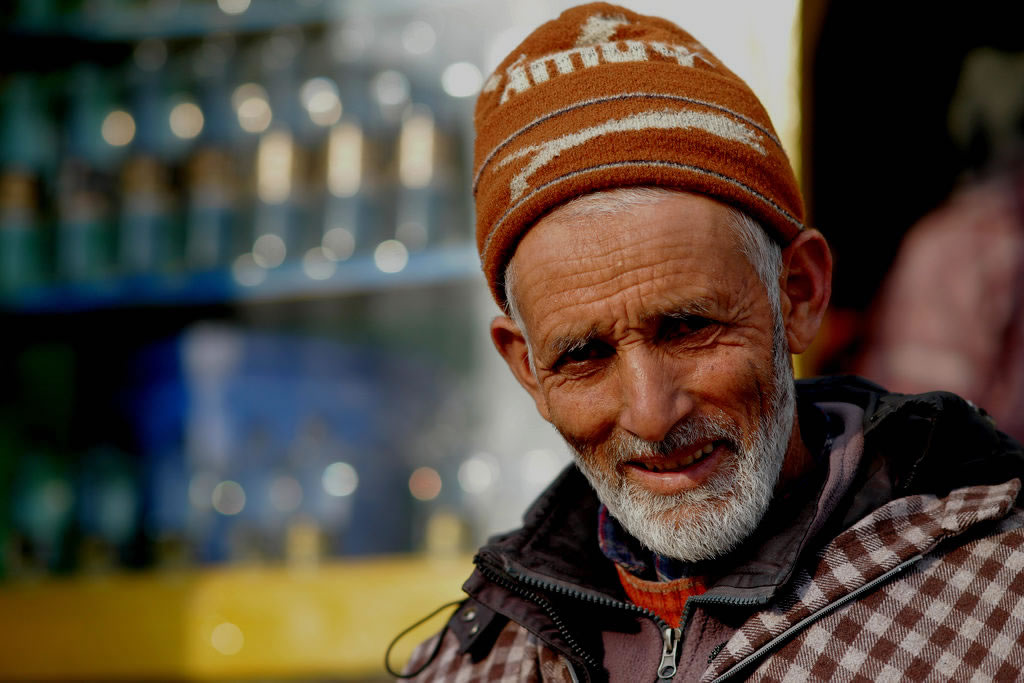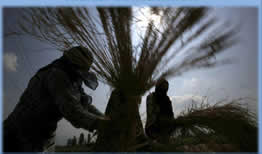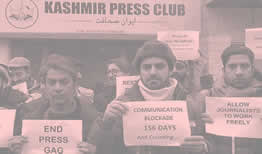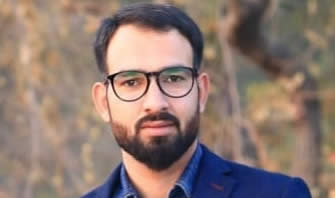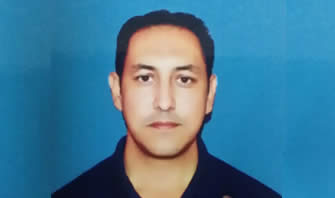The Intersectional Struggles of Women under Repressive Laws in Indian-Occupied Jammu and Kashmir
The Intersectional Struggles of Women under Repressive Laws in Indian-Occupied Jammu and Kashmir
Abstract:
In conflict zones, women’s body, home, and ascribed roles within society, often becomes a site of contestation and control. However, in the case of Indian Occupied Jammu and Kashmir (IOJK), the impact of draconian laws like Armed Forces Special Power Act (AFSPA) and Public Safety Act (PSA) is not uniform. It is influenced by multiple social roles and identities, which include gender, ethnicity, social class, and religion. Thus, the study uses Kimberlé Crenshaw’s intersectionality model to give a layered perspective of how gender violence can not be comprehended in isolation from other forms of oppression. By employing the Boolean search method and qualitative exploratory approach, the research builds upon several scholarly articles, reports and ethnographic case studies.
By Syeda Shafia Batool
BS-IR (8TH) National Defence University Islamabad
One such case study discussed in this paper revolves around the life of a mother and an activist Parveena Ahanger, who lost her son to enforced disappearances. Her determination not only symbolizes the strength of the Kashmiri women, but at the same time, it also unmasks the prejudice they have to endure because of their multiple marginalization. The findings of this research underscores the need to engage a more complex and intersectional analysis in order to effectively understand the suffering of Kashmiri women under the combined oppression of militarized and political subjugation of AFSPA and PSA. In this way, through amplifying women’s voices and lived experiences, this paper seeks to shift from the conventional gender sensitive policies, to context relevant approaches that adequately capture the multiplicities of women’s identities and experiences within volatile areas such as IOJK.
Keywords: Intersectionality, Public Safety Act (PSA), Armed Forces Special Power
Act (AFSPA), Gender-based violence, half-widows, IIOJK, UNHCR-132 resolution,
Women, Peace and Security (WPS).
Introduction
“There's really no such thing as the 'voiceless'.
There are only the deliberately silenced, or the preferably unheard.” ―
Arundhati Roy
The position of women in the disputed territory of Indian Occupied Jammu & Kashmir, has been a subject of systematic violence and repression under the draconian laws like AFSPA and PSA. The enforcement of these laws which empowers Indian occupation security forces to curb violence in the name of restoring law and order in the region have had gross impacts on the livelihood of the Kashmiri women. By acknowledging that women’s experiences are different but interconnected, the intersectionality frame work by Kimberlé Crenshaw (1991) is useful in explaining these impacts, most of which are as a result of social categories such as gender ethnicity, colour, class, and religion among others. This research used an exploratory, qualitative research design to understand multiple and multifaceted experiences of women living under oppressive laws in IIOJK.
Since the aim was to obtain accurate information, Boolean searching
techniques were used in various scholarly databases and sources. This technique
enabled to select the literature, reports, and cases in line with the concerns
of gender, ethnic, and class dynamics regarding state repressive strategies in
IIOJK. Moreover, the research specifically employed a case study of Parveena
Ahanger - a mother of a disappeared son who being a woman, a mother and a
political activist has been put under the menace of both gender violence and
political persecution. Despite being portrayed as a symbol of resistance due to
her unrelenting determination to fight for justice, she has to undergo personal
and social suffering which will be subsequently deconstructed through
Intersectional analysis. In this way, Intersectionality opens up a better
understanding of how these cross-cutting social categorizations defines
experiences of oppression and survival, underlining the significance of
adopting more complex and intersectional approaches to meet the needs of
Kashmiri women.
Impacts
of AFSPA and PSA on Kashmiri Women
The
Constitution of India claims to protect civil liberties and individual rights
like the right to life and liberty, freedom of speech, and equality before law.
These rights are legal and can be defended in Supreme Court, yet, these rights
are not inviolable and may be terminated for the sake of safeguarding the state
security. Such an approach becomes especially problematic when applied in
territories such as Indian-Occupied Jammu and Kashmir (IOJK), where the state’s
security forces can independently determine which regions are ‘disturbed,’ and
therefore require military intervention. When an area is declared ‘disturbed’,
state’s civil authority is replaced by military force and here civic issues
become security issues. This shift in the process practically marginalizes
civil institutions and shifts the policing function to the military, which
challenges the balance of powers between civil and military authorities. The
People’s Union for Democratic Rights noted that the declaration of the affected
area as disturbed one actually means handing over the area to the army and in
this way it renders the civil power irrelevant. Some scholars have also
referred to this state of affairs as the procedural martial law, which enjoys
no constitutional sanction and is synonymous with serious violation of human
rights.
In
the case of Indian Occupied Jammu and Kashmir, the whole area of Kashmir valley
is regulated by the Disturbed Areas Act, Armed Forces Special Power Regulation
Act (AFSPA), and the Public Safety Regulation Act (PSA). The Disturbed Areas
Act is crucial for AFSPA implementation because it empowers the security forces
with specific authority to arrest anyone without warrant and to issue shoot at
sight order. It further grants blanket protection to the security forces,
precluding them from arrest for alleged criminal acts, including murder and
rape. This legal shield plays its part in fostering an environment of total
lack of accountability, which leads to continued violation of human rights.
Similarly, the PSA also escalates the repressive climate in the region since
individuals are detained without any trial for up to one year. Like AFSPA, it
has no legal definitions and judicial decorum, which has made it an instrument
of political oppression instead of genuine security threats. The PSA is often
used to neutralize political rivalry and silence dissent, with detentions often
not backed by evidence, and legal representation. Both the laws AFSPA and PSA
are repressive in nature, and have affected the lives of women in Kashmir in
significant ways, in terms of their intersecting identities.
Systemic
and Intersectional Vulnerabilities Intensified by Repressive Laws
AFSPA
and PSA, which have become instrumental in IOJK have not only paved way for
impunity but have also deepened systematic and intersectional threats for women
in Kashmir. These laws tend to uphold social segregation and discrimination
making it hard for women to go about their normal duties in their society. In
order to grasp the suffering of Kashmiri women under oppressive laws like AFSPA
and PSA, it is essential to incorporate an intersectionality lens.
Intersectionality as a theory was developed in 1991 by Kimberlé Crenshaw, which
describes people’s experience as a function of one or several intersection of
social identities including gender, class, religion, ethnicity/ race among
others. When applied to the case of Kashmir, this framework offers a way of
moving beyond the reductive portrayal of women as passive receivers of violence
and instead recognizes the complex subjectivity that shapes their experiences.
In this context, I will employ a three-pronged approach to analyze their
experiences:
1.
Additive Effects: This approach aims to assess the
specific forms of oppression related to each identity that Kashmiri women have.
For instance, while mothers are subjected to the emotional shock of losing
their loved ones to state violence in the region, these women also suffer major
economic insecurity as well. This may be because of job losses or a decline in
household income due to absence of a male figure in a militarized conflict, hence
adding to their insecurity. Thus, every role, being a mother, a widow, a
survivor of violence, introduces an additional negative factor that influences
the lives of these women in general.
2.
Multiplicative Effects: The multiplicative effects
approach studies how one identity condition exponentially worsens the other to
create several disadvantages. For instance, the social labels attributed to
women with linkages to militants or political detainees ultimately hampers
their social contacts and care systems. The fact that they are mothers,
caregivers, and relatives of political detainees compounds their
marginalization and increases their exclusion from social and economic networks
on which they depend. The multiplicative effects underline how the different layers
of oppression are created by the cumulative subject positions that are
detrimental to the lives of the Kashmiri women.
3.
Intersectional Effects: The intersectional effects
approach is used to study the overlapping experiences of women living in Kashmir,
which remains under threat of state control, and often harassed with no
possibility to get justice. These women operate in a world where the roles that
they play are intertwined, with experiences of hardship based on the different
factors that make up their identity, such as being a woman, a mother, a widow
or a person in a minority group. These interconnections define their lives and
the ways in which they try to survive, resist, and adapt to the ongoing
conflict. The intersectional effects show that it is important to take into
account these multiple layers of identification to better comprehend the
peculiarities of the situation of Kashmiri women. Therefore, by adopting this
intersectional approach, the current study aims to explore the real-life experiences
of the women of Kashmir who are suffering due to oppressive laws.
Intersectional
Vulnerabilities in the Context of Conflict
The multi-faceted vulnerability of the women of Kashmir cannot be understood in isolation from the socio-political fabric of the region. Previous studies on the roles of women in the context of IIOJK usually confines them into two categories of either victims of oppression or passive supporters of resistance. However, this idea does not help in understanding the real situation of women and their role in the conditions of the state of Occupied Jammu and Kashmir. Intersectionality, on the other hand, pays attention to how other factors complicate or enhance these experiences and statuses of these women, ranging from survivors of sexual assault, widower, motherhood, and other correlated aspects of their lives like class, ethnicity, education and socio-economic status.
It shows that topics relating to the narratives of Kashmiri women are
much more complex than just the continued subjugation of these women. For
instance, Fatima, a half widow, had to wait for two years just to get her FIR
filed, which in turn worsened her trauma and also gave an insight into the
bureaucratic challenges that these women undergo. This delay is not merely a
structural gap in the available resources but also a reflection of the
problematic structure of society asserted through the mistreatment of
half-widows who enter into wage earning roles as the main bread winners of
families. This change of roles puts them at further risks of physical and
sexual assault at the check points.
Furthermore, the patriarchal environment in the Indian-occupied part of Kashmir shapes the specific legal and financial dilemma they encounter. Property laws under the Hindu Succession Act, do not acknowledge ‘half-widows’. This legal loophole deprives half-widows of inheriting property as well as accessing necessary relief services unless and until, they produce evidence of their husbands’ death. This exclusion shows how patriarchy at the structural level ensures that gendered violence continues to trail these women because they do not have economic security and freedom that is accorded to them as humans.
Their gender
as women, their roles as mothers and wives, their status as widows or sisters
and daughters of prisoners who have been detained by the state, gives them
experiences that are not easily recognized by a law that is inherently
oppressive. These challenges are further magnified by the conflict that
constrains conventional family systems, leaving women to assume responsibility
that is otherwise not suitable for them. When applied to gender and class, the
concept of intersectionality makes it possible to define how such complex
social identities lead to specific modes of oppression that cannot be explained
based on the traditional approach of a single-axis perspective on gender or
class.
Physical
and Sexual Violence
One of the most chilling manifestation of AFSPA and PSA’s effect on women in Kashmir is sexual and physical violence at the hands of security forces. Rape and sexual assault cases are rampant, and violence in its various forms is employed to ensure compliance and silence. However, such experiences show that the women who take different social positions are not equally vulnerable. For example, widows and mothers of the disappeared are most vulnerable as their connection to political detainees or militants makes them even more marginalized and ostracized.
These social implications reduce their interaction
with other community members, remove them from support structures and increase
their susceptibility to violence and other forms of abuse. When analyzing the
occurrence of these acts of violence in the context of intersectionality, the
events in question can not be regarded as random instances of aggressive
behavior, but are organically connected to the social, political, and cultural
setting of the region. The sexual violence against the women of Kashmir is well
captured by the alleged mass rapes and torture that occurred at Kunan and
Poshpora in February 1991 by the Indian army. The fact that these atrocities
were not officially recorded for years make it apparent that rape is a
continuation of war where factors such as gender, ethnicity, and conflict
politics deepen the gap between accountability and justice.
The counter-offensive tactics employed by Indian state in Kashmir is marked by a distinctly gendered tone that is communicated through the language of domination. Two reports are published by UN High Commissioner for Human Rights in the year 2018 and 2019 that give a detailed account of India’s gross and systematic violation of human rights in IIOJK. These reports accuse India of employing pellet gunshots, extrajudicial killings in the disguise of cordon and search operations, arbitrary arrests and detentions, and torture against the civilian population, journalists, political and human rights activists in Kashmir. Regarding this, they specifically point out to the AFSPA and PSA shielding the Indian occupation forces committing cruelties against the people of Kashmir. According to a report by Kashmir Media Service, updated on March 8, 2023, women of Kashmir are being described as the worst-suffering victims of Indian state terrorism in IIOJK.
Indian forces sexually harass, abuse, and use
violence against Kashmiri women. The report shared an experience where Police
and Indian Army personnel raped a woman and her daughter during a cordon and
search operation in the Tral area of Pulwama. The report also stated that
Indian forces are using rape as a weapon of war with an aim of subduing the
Kashmiris through defeatism. This sexual subordination of women stands as not
only an egregious violation of public power but also as a means of asserting
and perpetuating power and dominance over individuals, families, communities,
and, indeed, the entire Kashmiri society. In this way, Kashmiri women are raped
not because of the gender but also because they are Kashmiris, and part of the
‘other’ ethnic group. Here ethnicity and gender, two distinct categories, have
become more defined by each other due to the ethno-nationalist approach adopted
after August 5, 2019, when the autonomy of Kashmir was repealed.
Psychological
and Mental Health Effects
The
impact of the laws such as AFSPA and PSA are immense in terms of the
psychological and mental health of the individuals who are subjected to suffer
under those laws. Kashmiri women constantly remain in a state of chronic trauma
as a result of which, they suffer from high incidences of PTSD, depression,
anxiety and stress. These mental health issues are worsened by the continuing
militarization of the region, which breeds cult of fear among the entire
populace. For example, women who were left to be head of households because of
detainment or abduction of their husbands/fathers/sons will experience stress
and anxiety as they have to take up other roles and pay bills. Many of them
find themselves with no access to any form of mental health care or even support
systems, which only worsens their psychological state.
The
records from Srinagar’s Hospital for Psychiatric Diseases reveal alarming
trends. The outpatient department, which was extending its service to about 100
patients per week in the early 80’s is now handling more than two hundred and
three hundred patients on a daily basis. These patients include women
especially those within the age of 16-25 years. Mental health issues are still
a taboo in this region, hence, the statistics do not depict the true state of
affairs, as a far greater percentage of women would never make it to the
hospital in the first place. This was manifested in Srinagar’s hospitals, where
the overall suicide rate of the late 1990s and early 2000s confirmed that women
were more likely to attempt suicide and record a greater mortality rate than
men.
The
restrictive laws like AFSPA and PSA gives women a sense of fear and unstable
mental state that alters their lives drastically. One student from the
Srinagar’s Government College for Women explained that due to constant
unpredictability of the life under militarization, people turned to religion.
Indeed, such a shift is representative of the contemporary trend, wherein,
religion stands as the shelter for one with a constant experience of trauma and
repression. Even though such behaviors give a momentary escape, they reveal
just how much the mind suffers living in a context where one’s safety and
health is constantly threatened by the government. These cases of aggression of
laws toward women in relation to psychological trauma give evidence of how
legal and systematic oppression work in women. Moreover, the unavailability of
mental health services in IOJK as a result of the conflict, and the state’s
inability to cater to women’s rights is a sign of their continued
marginalization in the region. Tackling this crisis does not simply entail a
readiness to cope with the mental suffering of women but also analyses how such
legal oppressive laws make them suffer in the first place.
A
Socio-Economic Crisis
A
feature that is generally not highlighted in the case of Kashmir is how the
lower middle-class people especially the women and girls have been worst
affected. The conflict that has been manifested by the militarization of the
region has caused drastic loss, with estimates showing that about 60, 000 men
have been killed. When husbands, sons and other male relatives are permanently
absent, the levels of family incomes have been considerably lowered and many
families are now headed by women. This economic pressure is more felt by women
in such households, since they are now faced with the new roles of being
economic providers in a society that was earlier characterized by male
providers. This is exemplified by an increase in work force of female children
by 45% in the rural areas and 67% in the urban areas of IIOJK.
Similarly,
influenced by the conflict, the female education in Kashmir has also been worst
affected. Systematic and deliberate targeting of schools and other institutions
of learning by military forces enhances the threats of fear and insecurity,
especially to school going girls. This has made school drop out rates of girls
to rise significantly due to the ever looming danger of being sexually harassed
or abused by military personnel. Stories of physical contact search,
embarrassment and molestation by security forces especially in the rural areas
have compounded this problem. Failure to report these incidents is attributed
to the fear of social rejection hence making the young girls as well as their
families more insecure.
Case
Study of Parveena Ahanger
Despite of these enormous odds, women of Kashmir are not silent sufferers only. Many have left their homes to become the vanguards of change in the fight for justice and combating violence. For instance, Parveena Ahanger, an aging mother who after losing her son took up leadership in the Association of Parents of the Disappeared Persons (APDP) is enough to illustrate the strength of women in Kashmir. These women, who have changed the meaning of being a victim, are now bargaining in various levels, seeking justice and equality, fighting against long- standing violent atrocities that are claiming the lives of thousands of persons.
Taking in account of her multifaceted struggle since the disappearance
of her son Javaid Ahmad, she said : “When I went out of the home, to search for
him I was a different person. Every morning when the sun comes up, I felt like
there is a long fight ahead. Eventually, I turned to “sanglaat/iron”; there was
no stopping me. Not even my husband. He would for many years scold me, he would
threaten to divorce me every single day. He would tell me “forget that boy, we have other children, stop wasting time in the
protests, stop bringing shame to the family by sitting in public”. He would
tell me that I am destroying the entire family. He was also right too, whenever
my other children required my attention, I was not available. My husband would
remark that this is not what an ‘asal zanan/good woman’ would do? My relatives
would turn their faces the other way, when they saw me in the park or on the
streets. They would say, Parveena is a gone case, she is acting like a loose
woman now.
I am a mother; a mother is a mother, she cannot let go her child like that. What can one hold onto when a son has been kidnapped from the bosom of his mother? If I can not be a good mother, how can I be a good woman? I feel like in front of the mirror I am looking at an unhappy woman, who is waiting for her son. The old me, looks so blurry under all this suffering, she is barely there. At one point, I was happy and joyous making others to laugh. I used to be “zindeh-dil,” I used to be brave, but now I am not the woman that I used to be. It made me feel like I am not just any woman out there after the incident. What more could I do as my pain was too intense. I am still afraid he is outside the door or the window, I get attacks as I continue staring at the door even when it is the wind that knocks, I always think it might be him knocking.
I even
exposed my face, I stayed in the streets, I chased after army officers and
politicians, anyone, anyone who can assist in locating my son. The men looked
at me thinking I was crazy; they called me “pagal maouj/mad mother”. How can I
be sane, even God will forgive me, I am a mother, I gave him birth – my heart
has been taken out of my body, my womb has been injured, scarred; I do not care
if my hair is showing. I would have gladly remained locked inside the four
walls of my home but the pain of losing a child brought me out here. One day,
these soldiers will understand the feeling of disappearing people. They too
will suffer and so will India.”
To
deconstruct Parveena's narrative and reflect on how her identity as the mother
of a disappeared individual has surpassed all other identities, we can analyze
her experience through the lens of Intersectionality. Intersectionality guides
us in comprehending that these identities are not separate but intertwined and
create different experiences of oppression and survival. Parveena, being a
mother of a disappeared son also claims her identity as a Kashmiri woman living
in a conflict prone society in which women and mothers in particular are
navigating a perilous territory. As a woman, she is expected to remain passive
but at the same time, as a mother, she has to stand up for her son; this forms
the core paradox in her identity, which is both susceptible to resistance and
suffering. The judgment she undergoes, as a woman is not only restricted in
terms of gender but in the political climate of Kashmir that focuses on the
opposition she gives to the existing power dynamics.
Reflection on Her Identity
Analyzing Parveena’s story, one can understand how the identity of the mother
totally overcomes every other identity. The disappearance of her son wiped out
the person that she used to be (a zindeh-dil woman) and turned her into an
emblem of protest. That maternal role she assumed altered her very being,
pushed here to go against traditions and endure public embarrassment, not to
mention mourning. Her miseries are not solely personal but are reminiscent of
the socio-political circumstances of Kashmir where every women in general and
mothers in particular fight this protracted battle. Continued societal shame
and her husband’s dismissal underscore the effects of both individual suffering
and collective injustice. Her turning into “sanglaat” (iron) is a direct,
forceful commentary on the ability of the role of a mother, specifically in
such despairing conditions, which not only redefines her being, but also erases
all other aspects of her nature, thus making her determined and vulnerable,
heroic and victimized, all at once.
Her
determination not only symbolizes the strength of the Kashmiri women, but at
the same time, it also unmasks the prejudice they have to endure because of
their multiple marginalization. Parveena’s story shows that the on-going
conflict in Kashmir has severe damaging effects on the psychological well-being
of women, especially mothers. Her case study is not solely about a mother
mourning for her lost son; it is also about how a woman subverts conventional
gender roles while advocating for her rights under oppressive laws such as
AFSPA and PSA. In her journey, Parveena uses three idioms; “sanglaat” (iron),
“buth” (face), and “metch” (crazy) to express how she transform. These are culturally
rooted Kashmiri phrases, that reflect power, resistance, and transition from
conventional gender expectations. The terms ‘sanglaat’ used by Parveena
represents her new found power and purpose; ‘buth’ refers to the aggressive
public character that she acquires in order to demand justice for her son. The
term “metch” refers to madness and mysticism, as the degree of her grief and
determination is brought into spotlight. From Parveena’s case study, it is
clear to see the emotional, psychological and social effects of conflict on
women particularly when they lose their beloved ones and how their identities
are redefined by conflict.
Legal and Advocacy Measures for
Combating AFSPA and PSA
Since Kashmiri women suffer multiple oppressions under AFSPA and PSA, there is
a need for legal and advocacy frameworks to support the rights of women in the
region. All of these strategies must be located within national and
international human rights frameworks and must be given utmost primacy in
relation to lived experiences of women of Indian occupied Jammu and Kashmir.
Mainstreaming of UNSCR 1325
into Domestic Litigation
Despite AFSPA and PSA being repressive legal instruments utilized by the Indian
state, there are proven and viable legal approaches towards combating the
implementation of these laws: The most crucial of which is integrating the
UNSCR-1325 resolution into domestic litigation. UNSCR 1325 provides for the
protection of women and girls in conflicts as well as underscore the need for
women’s participation in the peace processes. Therefore, lawyers and human
rights organizations can file petitions in Indian courts on the grounds that
AFSPA and PSA are unconstitutional since they infringe Indian obligations under
the UNSCR 1325. This strategy does not only raise the gender impacts of such
laws but also synchronizes the legal advocacy with the International human
rights norms. This stresses that the gender-sensitive change must be made with
utmost consideration of the situation of the women in Kashmir and it has
simultaneously highlighted the importance of participation of women in the
legal and political process.
Public Interest Litigation (PIL) and Gender-Sensitive Reforms
Another way through which the implementation of
AFSPA and PSA could be resisted is through Public Interest Litigation (PIL).
Activists can then use PILs to call for gender-sensitive reforms that will
bring these laws in-line with UN SCR 1325 and other International human rights
instruments. These reforms’ objectives would be to mitigate the adverse impact
of such laws on women and guarantee their legal rights. Consequently, PILs can
also be used to challenge the impunity and arbitrary killing of the victims of
violence under AFSPA and PSA. When the gender dimension of these violations is
revealed, activists can work to reform laws and gain increased legal protection
for women in conflict areas. Such strategy would entail engaging legal
personnel, human rights bodies and women activists in order to make legal
arguments related to this matter and anchored to domestic and international
laws.
Leveraging International Legal
Frameworks
Besides domestic litigation, there is a need to tap into international legal
instruments in order to compellingly oppose the actualization of AFSPA and PSA.
About this, one can file cases in International Court of Justice or any other
International tribunal with an argument that these laws contradict to
international norms and regulations including UNSCR 1325. This approach while
difficult and likely to encounter legal and political barriers, goes a long way
to raising awareness of these laws across the globe and increases pressure on
the Indian government to change the law.
The
second approach is to rely on CEDAW commitments that was signed by the Indian
government The Convention on the Elimination of All Forms of Discrimination
Against Women (CEDAW). Since India is a party to the Convention on the
Elimination of All Forms of Discrimination Against Women (CEDAW), the Indian
government can be encouraged to make AFSPA and PSA compliant with CEDAW and UN
Security Council Resolution 1325. If such issues are taken to the CEDAW
Committee then they can lead to international pressures to change the laws at
the domestic level.
Conclusion
This research under intersectional lens provided a clear understanding of how the restrictive laws like AFSPA and PSA affects the lives, security and well-being of women in Kashmir in Indian Occupied Jammu and Kashmir. By focusing on their multiple intersecting identities, this study demonstrates how physical, sexual, psychological and socio-economic factors amplify the risks faced by women in Kashmir. Case study of individual like Parveena Ahanger, a well-known human rights activist and an advocate for the missing people, revealed how gender and state oppression combine to impact current and future experiences of women and subject them to increased vulnerabilities under oppressive state structures. In documenting and analyzing these particular encounters, the study adds to the ongoing debate on gender, conflict and state violence.
It calls for better
implementation of gender responsive measures and strategies for implementing
policies that consider the multifaceted impacts of conflict on women. The
findings therefore – call for legal reforms and advocacy within Kashmir and
International forums that places the issues of women in the forefront. It is
therefore mandatory, that while arguing against AFSPA and PSA, one must
question India’s commitments under the WPS and CEDAW framework, to which the
country is signatory. Women Peace and Security agenda is a set of agendas in
the UN Security Council with the primary goal of defending women in armed
conflicts and engaging them in the peace process based on UN Security Council
Resolution 1325 and others. In this manner, litigation efforts can also
demonstrate that AFSPA and PSA are not only unconstitutional, but also violate
India’s International obligations.
Bibliography
- Agarwal, Aanya. "IN
THE INTERSECTION: WOMEN’S EXPERIENCES IN KASHMIR." Int. j. of Social
Science and Economic Research 7, no. 7 (July 2022), 1838-1845. Accessed
July, 2022. https://doi.org/10.46609/IJSSER.2022.v07i07.007.
- Bhat, Adil. “Kashmir: History, Politics, Representation.” Contemporary
South Asia 26, no. 3 (July 3, 2018): 367–68. https://doi.org/10.1080/09584935.2018.1507739.
- Bhattacharyya, Rituparna. “Living with Armed Forces Special Powers
Act (AFSPA) as Everyday Life.” GeoJournal 83, no. 1 (September 22,
2016): 31–48. https://doi.org/10.1007/s10708-016-9752-9.
- Bouzas, Antía Mato. “Resisting Disappearance. Military Occupation
& Women’s Activism in Kashmir, by Ather Zia.” European Bulletin of
Himalayan Research, no. 56 (September 10, 2021). https://doi.org/10.4000/ebhr.82.
- Chandak, Sujit R. “Do You Remember Kunan Poshpora.” Contemporary
South Asia 26, no. 1 (January 2, 2018): 99–100. https://doi.org/10.1080/09584935.2018.1433399.
- Connah, Leoni. “International Law vs. Domestic Law in Kashmir.” Peace
Review 33, no. 4 (October 2, 2021): 488–94. https://doi.org/10.1080/10402659.2021.2043008.
- Crenshaw, Kimberle. “Mapping the Margins: Intersectionality,
Identity Politics, and Violence against Women of Color.” Stanford Law
Review 43, no. 6 (July 1991): 1241–99. https://www.jstor.org/stable/1229039.
- Fatima, Hareem , Syeda Shafia Batool, and Nabeel Hussain. “Gender
Dynamics in Indian Illegally Occupied Jammu and Kashmir: Exploring UNSCR
1325 through an Intersectional Lens.” Cissajk.org.pk Vol I, no. 1
(2023). https://strategicperspectives.cissajk.org.pk/gender-dynamics-in-indian-illegally-occupied-jammu-and-kashmir-exploring-unscr-1325-through-an-intersectional-lens-pdf/.
- Kazi, Seema. “Between Democracy and Nation: Gender and
Militarisation in Kashmir.” ResearchGate. unknown, 2008. https://www.researchgate.net/publication/297280043_Between_democracy_and_nation_Gender_and_militarisation_in_Kashmir.
- Kazi,Seema “Women, Gender Politics, and Resistance in Kashmir.” Socio-Legal
Review 18, no. 1 (January 1, 2022): 95–117. https://doi.org/10.55496/aukx4646.
- Persons, Disappeared. “Association of Parents of Disappeared
Persons (APDP Kashmir) - Official Website.” Association of Parents of
Disappeared Persons, August 8, 2018. https://apdpkashmir.com/.
- Rashid, Mantasha. “Violence against Women in Kashmir: Personal and
Political : WestminsterResearch.” Westminster.ac.uk, 2022. https://westminsterresearch.westminster.ac.uk/download/d3621272532e2c1c41a1e1817a598f3aad5e34c39d229fcd5edb92c35e6796b8/2725441/Rashid%20Final%20Thesis.pdf.
- Tehelka WebDesk. “A Cup Full of Woes for the Valley’s ‘Half Widows’
| Tehelka.” Tehelka.com, January 16, 2022. https://tehelka.com/a-cup-full-of-woes-for-the-valleys-half-widows/.
- Zia, Ather. “The Politics of Absence: Women Searching for the Disappeared in Kashmir,” January 1, 2014.Zia, Ather “The Spectacle of a Good Half-Widow: Women in Search of Their Disappeared Men in the Kashmir Valley.” PoLAR: Political and Legal Anthropology Review 39, no. 2 (November 2016): 164–75. https://doi.org/10.1111/plar.12187
Related Research Papers
